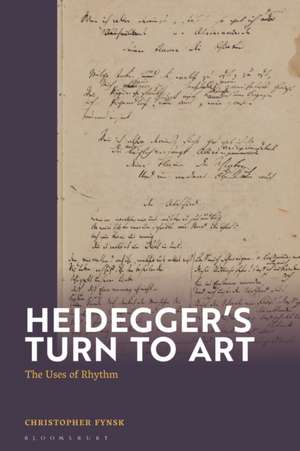Heidegger's Turn To Art: The Rhythmic Figure
Autor Christopher Fynsken Limba Engleză Hardback – 10 iul 2024
Preț: 509.93 lei
Preț vechi: 592.95 lei
-14% Nou
Puncte Express: 765
Preț estimativ în valută:
97.58€ • 101.26$ • 81.57£
97.58€ • 101.26$ • 81.57£
Carte disponibilă
Livrare economică 22 februarie-08 martie
Preluare comenzi: 021 569.72.76
Specificații
ISBN-13: 9781350410039
ISBN-10: 1350410039
Pagini: 256
Dimensiuni: 156 x 234 x 25 mm
Greutate: 0.48 kg
Editura: Bloomsbury Publishing
Colecția Bloomsbury Academic
Locul publicării:London, United Kingdom
ISBN-10: 1350410039
Pagini: 256
Dimensiuni: 156 x 234 x 25 mm
Greutate: 0.48 kg
Editura: Bloomsbury Publishing
Colecția Bloomsbury Academic
Locul publicării:London, United Kingdom
Caracteristici
Links rhythm to other key ideas in Heidegger's thought including "usage" (Brauch) and "being"
Notă biografică
Christopher Fynsk is President of the European Graduate School, Switzerland, and Dean of the EGS Division of Philosophy, Art, and Critical Thought.
Cuprins
Introduction: The Rhythms of UsageChapter One: Rhythmic TransportChapter Two: The Rhythmic FigureChapter Three: Usage and RelationChapter Four: The Uses of CraftAppendix: Aristotle's Poetics, Hölderlin's RemarksIn the Guise of a Conclusion
